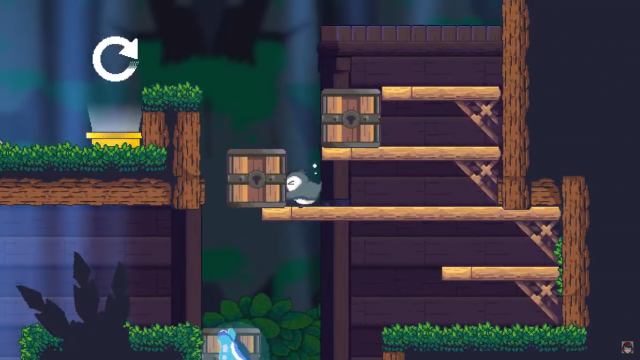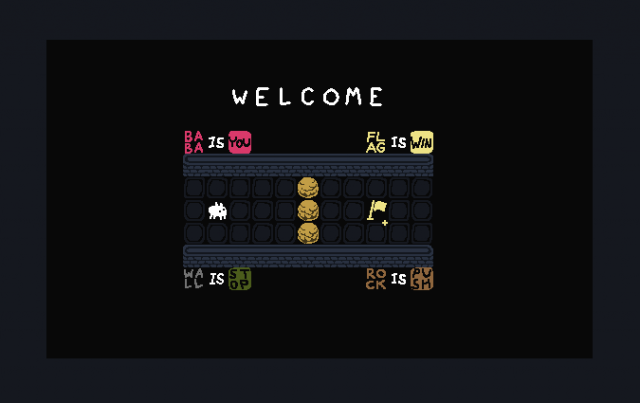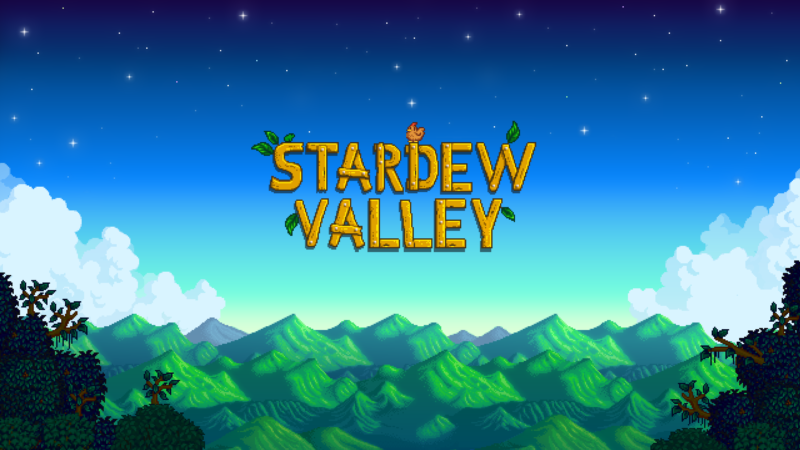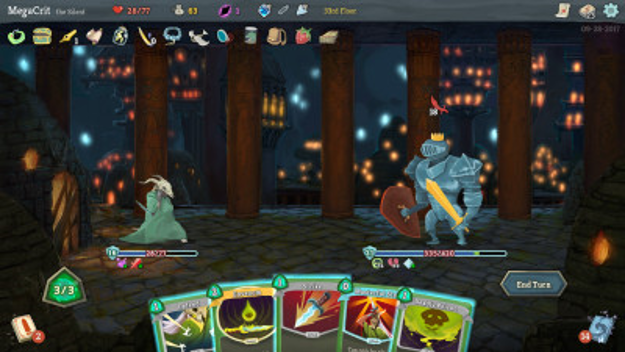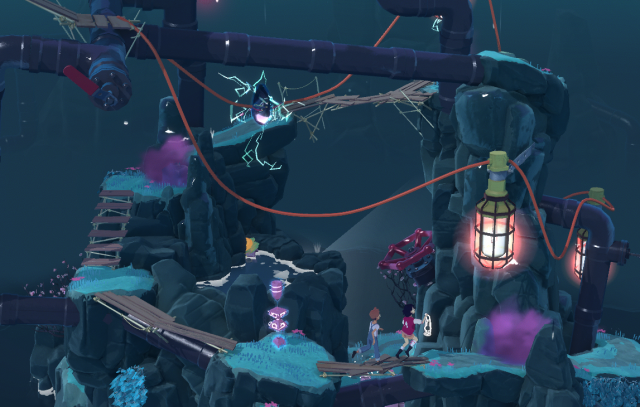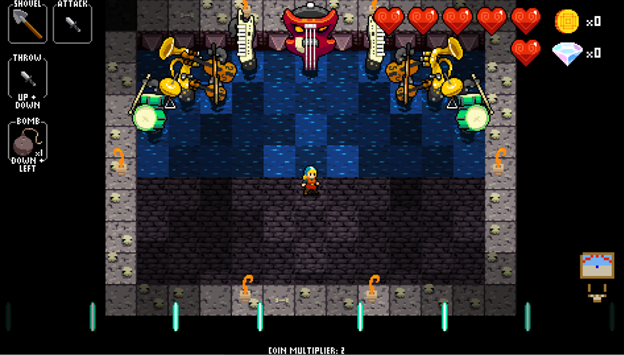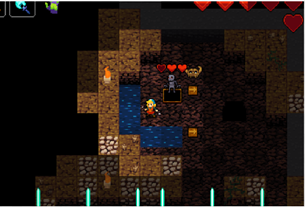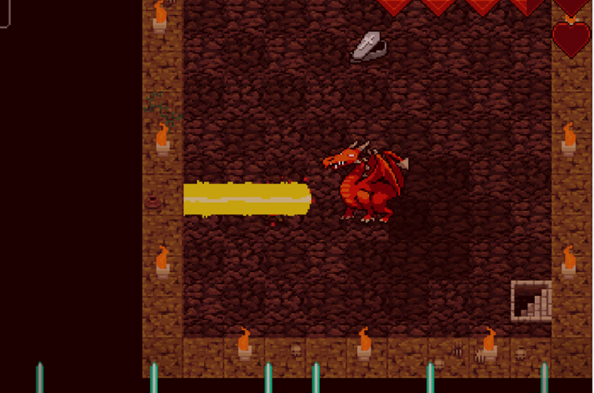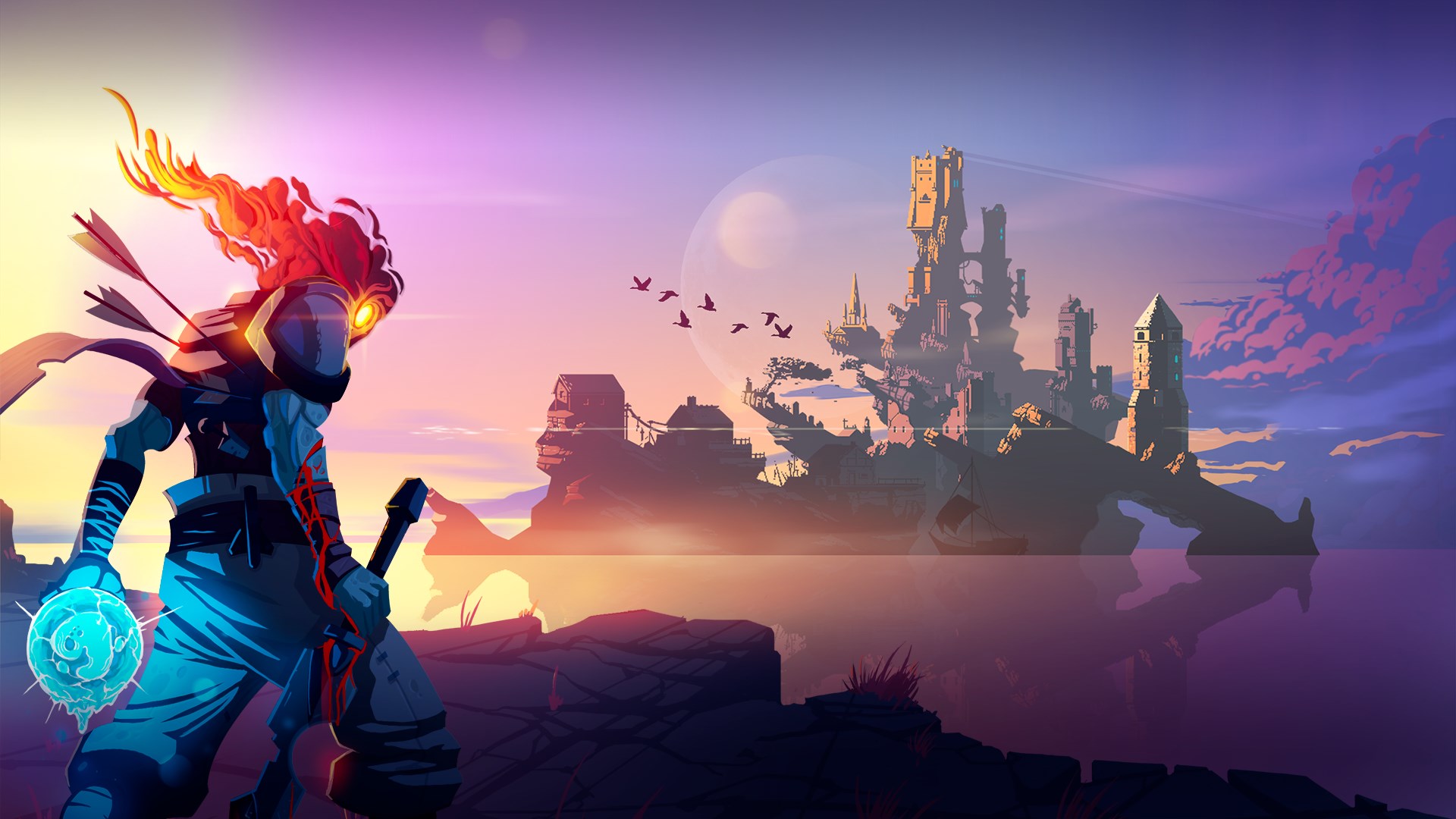
Dead Cells is a roguelike, Castlevania-inspired action-platformer, allowing you to explore a sprawling, ever-changing castle… assuming you’re able to fight your way past its keepers. To beat the game you’ll have to master 2D souls-like combat with the ever present threat of permadeath looming. No checkpoints. Kill, die, learn, repeat.
From the dead cells wiki
Elemental Tetrad:
Mechanics:
Dead Cells’ core mechanics are simple, move around the level and kill enemies, while dodging or parrying enemy attacks. The diversity of level layouts, environmental hazards, enemy types and equipment combinations make full use of the core mechanics to create a large variety of challenges and situations for the player to overcome.

At its core, Dead Cells is a rogue-like. Players are expected to be defeated often, each time starting anew, but with more knowledge of the game and access to persistent upgrades that helps the player progress further through the game. At every corner lurks a new mechanic for the player to master, the game never feels dull.
Story:
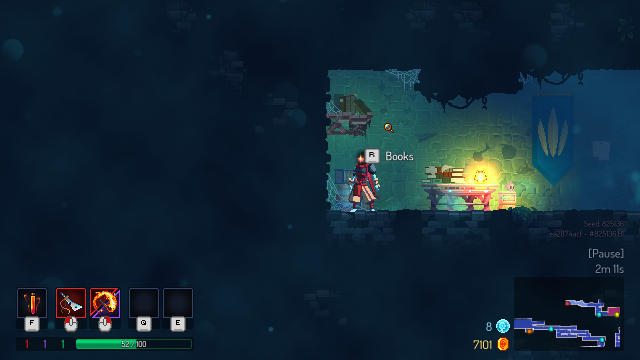
The story in Dead Cells is rather light, the player plays as the Beheaded, whose goal is to travel through the levels to hunt the King. The player is not given any prologue or direction at the beginning of the game. Pieces of story and lore are drip fed to the player as they progress through the game, via short cutscenes from interacting with points of interests, or when the player defeats a major boss.
Aesthetics:
The game features grim 2D pixel art graphics and grungy level and enemy design that accurately signals to the user: this game won’t be sunshine and rainbows.
Technology:
While this game is available on both PC and consoles, it is clear that the game is meant to be played with a controller.
Lens of Problem Solving:
A key component of performing well in the game is designing the right build (combination of equipment and skills). Newer players will often find their runs ending very soon due to a lack of damage output or survivability. Seeking out equipment and selecting skills that synergise with each other is a key problem that players will need to solve in order to beat the game, especially at higher difficulties. This game demonstrates good game design, by balancing the skills and equipment such that there are many viable builds. This encourages players who beat the game using a specific build to try out different builds, which lead to refreshing new experiences.
The Lens of Fun:
The core gameplay loop is simple – traverse each level and kill enemies along the way. Killing enemies is not a simple activity of mashing buttons, certain enemies have a special attack to watch out for and the player must dodge or parry at the right time to avoid taking damage. The controls were very well polished, which is essential for an action platformer title. The graphical and aural feedback were well polished as well, the enemies would explode with a satisfying sound when killed, and send bits of enemies flying across the floor. Important gameplay events such as boss fights and leveling up were accompanied with sound effects that gave the player a feeling of strength.
The Lens of Surprise:
The game employs a procedural level generation technique that randomizes the layout of the levels each time. No two runs will be the same. Players will be blessed with good RNG in some runs and encounter tough levels in other runs.
The Lens of Curiosity:
The game has a minor story component, provided as points of interest scattered across the levels. Interacting with them rewards the player with interesting lore and tidbits about the world they are in. However, the story/lore is not very compelling and almost feels as if it were added as an afterthought and does not contribute very much to the appeal of the game.
Fortunately, the game is still able to intrigue the player’s curiosity. The game features a non-linear level progression, allowing players to explore different biomes on the way to the final boss. The different biomes feature different enemy types as well as a variety of environmental hazards. Furthermore, the game features a large variety of equipment, categorized into melee and ranged weapons, shields, traps, turrets, grenades and powers. Each piece of equipment has a unique effect that synergizes well with certain builds. The player starts out with only the most basic of equipment unlocked. The others are unlocked through a variety of means, including exploration of the game (think secret areas), feats/challenges, killing bosses, random drops etc. Personally, I found this to be the best quality of the game. During my first dozen or so runs, I would experiment with different combinations of equipment, and be excited to test out a newly unlocked equipment.
The Lens of Endogenous Value:
The pickups in the game all provide endogenous value – gold is used to purchase or upgrade equipment, cells are used to unlock new equipment and enhance drop rates of better equipment. Equipment drops are always a welcome sight, as they are scaled to the level and are usually superior to the equipment from a previous level. It is rare that a player will find collecting items to be pointless or a waste of time.



